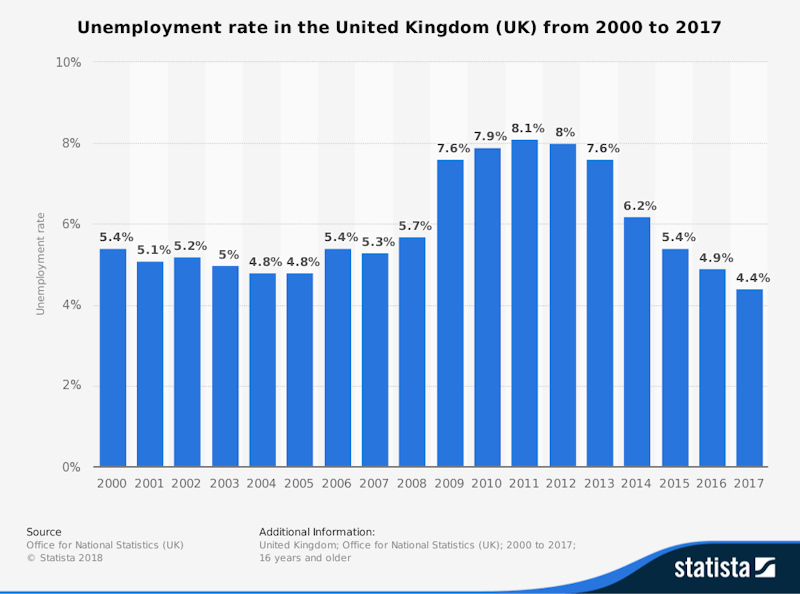Study Notes
Reducing Unemployment - Demand-side policies
- Level:
- AS, A-Level, IB
- Board:
- AQA, Edexcel, OCR, IB, Eduqas, WJEC
Last updated 18 Jan 2019
Here is a worked example of building chains of reasoning to this question: "Explain two demand-side policies that might be used to reduce unemployment."

Paragraph 1
Demand-side policies focus on maintaining a sufficiently-high level of aggregate demand so that the demand for labour remains strong. One demand-side policy might be for the central bank to lower their policy interest rate. This is known as a monetary stimulus.A fall in interest rates is designed to increase consumer confidence and reduce the cost of taking out loans such as a mortgage. Cheaper mortgages on houses would increase the effective disposable income of home-buyers leaving them with more to spend. As a result, consumer spending will rise leading to an outward shift of aggregate demand for goods and services. Because labour is a derived demand, increased AD should lead to an expansion of both real GDP and also total employment.
Paragraph 2
Demand-side policies might also focus on reducing the cost for businesses of employing extra labour. For example, the UK government recently cut national insurance paid by firms when they take on someone who has been long term jobless. These are people out of work for at least a year. A subsidy lowers the marginal cost of taking on an extra worker. As a result, assuming that workers are sufficiently productive in their new job, there is an incentive to hire more people. If successful, a jobs subsidy will increase the demand for labour and therefore lower the unemployment rate.Once in work, there is the added benefit that the newly employed will have more disposable income to spend on goods and services.
You might also like

Taking Europe's Pulse
16th October 2015
Occupational Immobility (Labour Markets)
Topic Videos
Macro Policy Conflicts
Study Notes

UK Economy Update: What is a Tight Labour Market?
25th November 2022
2.1.3 Impact of High Unemployment (Edexcel A-Level Economics Teaching PowerPoint)
Teaching PowerPoints
